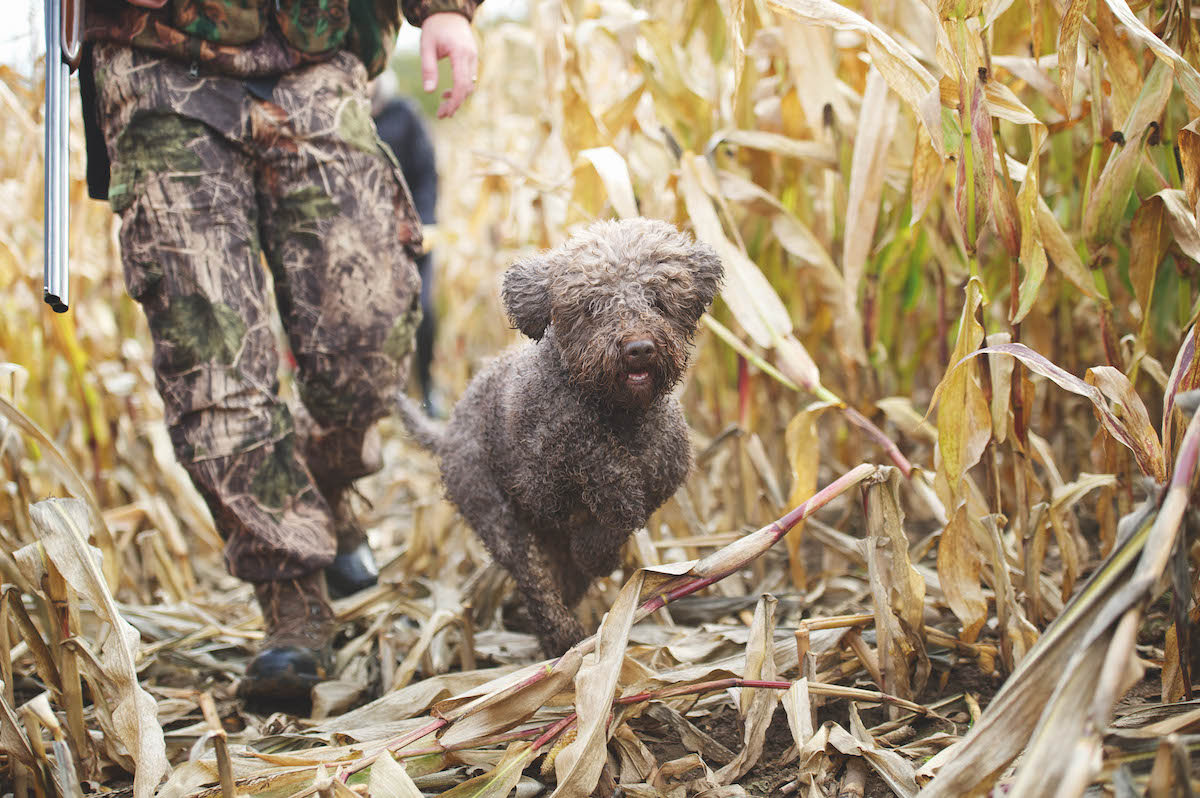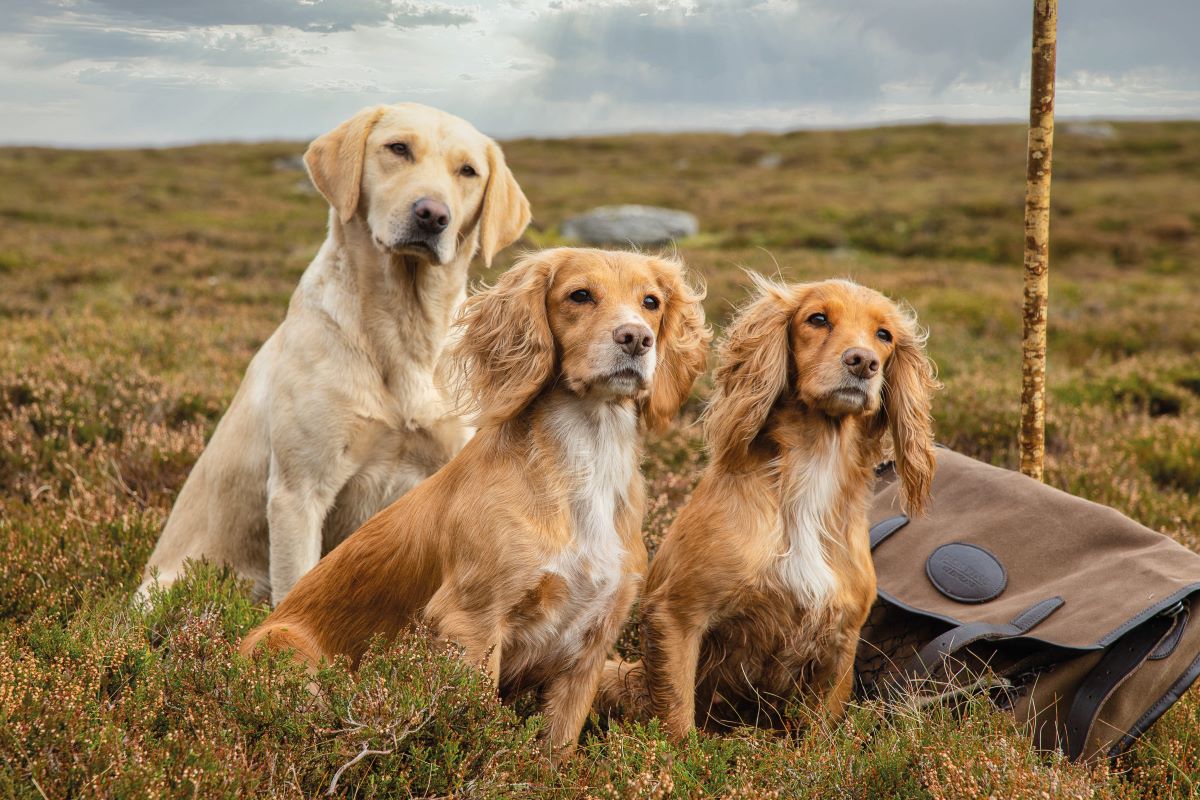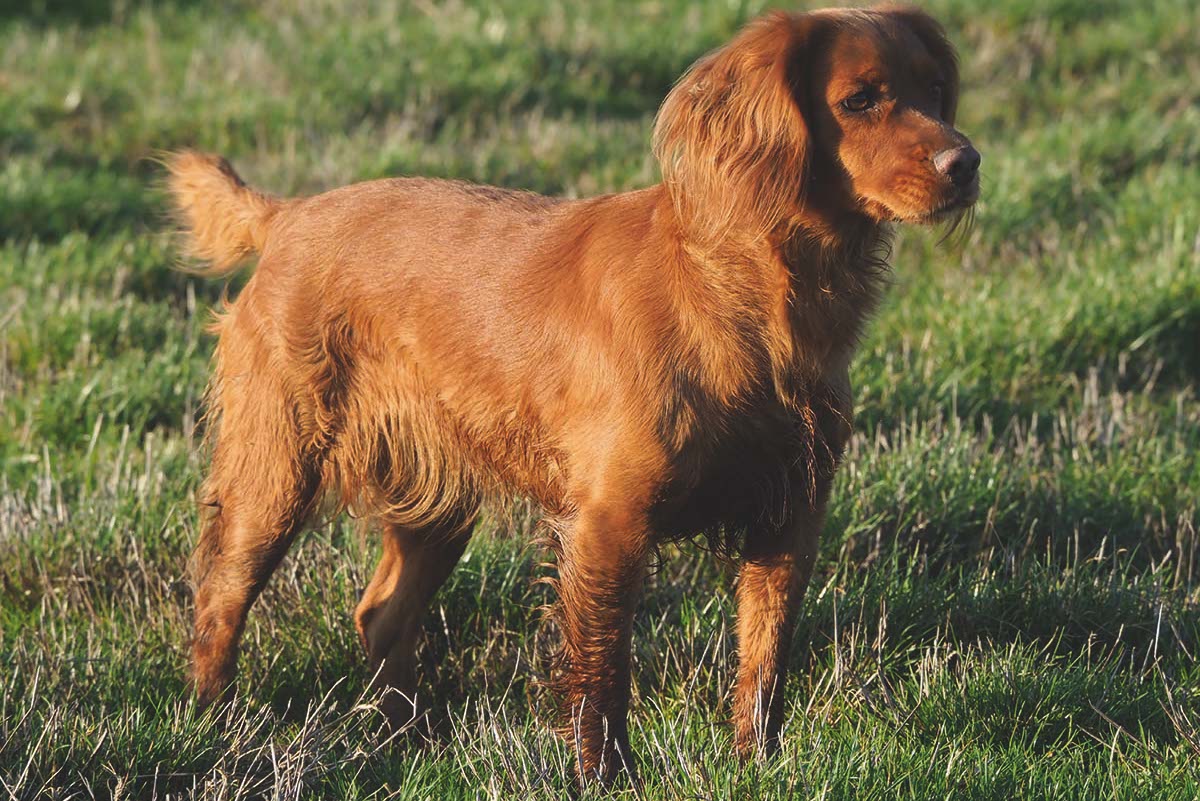Lagotto Romangolo: a fine Italian import
David Tomlinson investigates the unusual Crufts-winning gundog breed that is now better known for truffle hunting in its own country

Lagotto Romagnolos were originally bred as duck dogs, and they are very capable whether beating or picking up
Lagotto Romagnolo – is it really a gundog?
“I loved the look of that Italian dog that won Crufts, but it’s not really a gundog, is it?” That was the comment from a friend who had watched the final of Crufts and was surprised to find that the lagotto Romagnolo that won the coveted title of Best in Show was classified as a gundog. In 2014, the lagotto was placed by the Kennel Club (KC) in the spaniel sub-group of gundogs, so for tests and trials it has to compete with the minority spaniels. It had previously been a member of the utility gundog group, along with the Dutch kooikerhondje and the Spanish water dog, but that was such a curious grouping that it was quietly dropped. (Read Italian gundogs – what are their strengths in the field?)
I have to admit that the lagotto Romagnolo is the only KC-recognised gundog that I have never seen working, though over the years I have met quite a few. My first introduction to the breed was nearly 25 years ago, when I was involved in giving commentaries in the working dog ring at the CLA Game Fair. Until then, I knew little about this Italian breed (excusable, as it was only recognised by the KC in 2000), but having to talk about the breed for at least a minute without hesitation or repetition (a bit like Just a Minute) ensured that I soon learned all I could.
In this I was helped by the charming lagotto handlers who had brought their dogs to the fair. The first thing I was taught was how to pronounce the name correctly, which wasn’t difficult, even for a non-Italian speaker like me. Next, I discovered that the name ‘lagotto Romagnolo’ means ‘water retriever from Romagna’. Romagna is a region in north-east Italy that includes the Po Delta, where the lagotto was originally bred as a duck dog.

Orca put the breed on the map after winning Best in Show at Crufts in March this year
Shooting in the delta is from punts, where small dogs are a far more practical proposition than any of the larger breeds. Lagotto are, so I’m assured, great swimmers, and will even dive for wounded ducks. Their small size and natural agility also helps when climbing back into the punt. Particularly notable are their sensitive noses, which is why the breed is renowned for its truffle-hunting skills.
In appearance, a lagotto looks not dissimilar to a cockerpoo. One owner told me that all owners of the breed soon become experts at explaining to people that their dog really isn’t a cockerpoo, but a genuine and ancient breed. The lagotto has a non-shedding coat, which tends to be tolerated by people who can’t cope with moulting breeds. It is, however, high-maintenance and requires regular brushing, combing and trimming.
Being enthusiastic water dogs, lagotto delight in getting wet and muddy, a reminder that they are proper gundogs, not designer dogs for ‘townies’.
Though I may have never seen a lagotto at work, there a number that do work regularly on shoots in the UK. The Lagotto Romagnolo Club of Great Britain was established in 1996, and it is proud of the fact that it pioneered the breed outside Italy. As a glance at its website will tell you, it’s a lively and active organisation. It is keen to encourage people to take their dogs shooting and has a working sub-committee to encourage owners to do so.
Owners of these working dogs will tell you that although their lagotto might not hunt with the intensity of a spaniel, they have phenomenal noses. They naturally adjust between ground and air scent, and they are very capable whether beating or picking up.
Challenge
Until Orca the lagotto won Crufts, not many people had ever heard of the breed. However, there’s now more interest than ever before, with many people thinking that it might be the dog for them. Anyone contemplating doing so should read the warning on the club’s website, which, while noting “we are so proud of our wonderful breed” for its win, explains that ownership of a lagotto is something of a challenge and not for the faint-hearted.
“Lagotto are lively, inquisitive dogs who are intelligent, full of energy and keen to work… They are a great size, and they are very loving and loyal (to their stomachs, if not to their owners).” However, “their intelligence makes them clever thieves, who want to investigate everything with their mouths and their super-sensitive noses. They will steal your food, drink your tea, pinch your knitting, eat the corner of your book, chew your slippers — the list is endless.”
It warns there’s nothing they like better than hunting a pheasant or a squirrel, and they are energetic dogs that need a lot of exercise.
Popularity
Some years ago I wrote in this column that “the lagotto has a well-earned reputation as an all-rounder — excellent swimmer, talented at agility and brilliant at truffle hunting. If I was looking for a gundog with a difference, the lagotto would be high on my list.” It still would be, but I suspect that demand for puppies will be high now, as will the prices.
However, it is interesting to note that this is a breed that was already growing in popularity even before its Crufts win. In 2013, a mere 46 puppies were registered in the UK. That number passed the 200 mark in 2020, and last year no fewer than 324 were registered here, which makes it more popular than the other minority spaniels.








